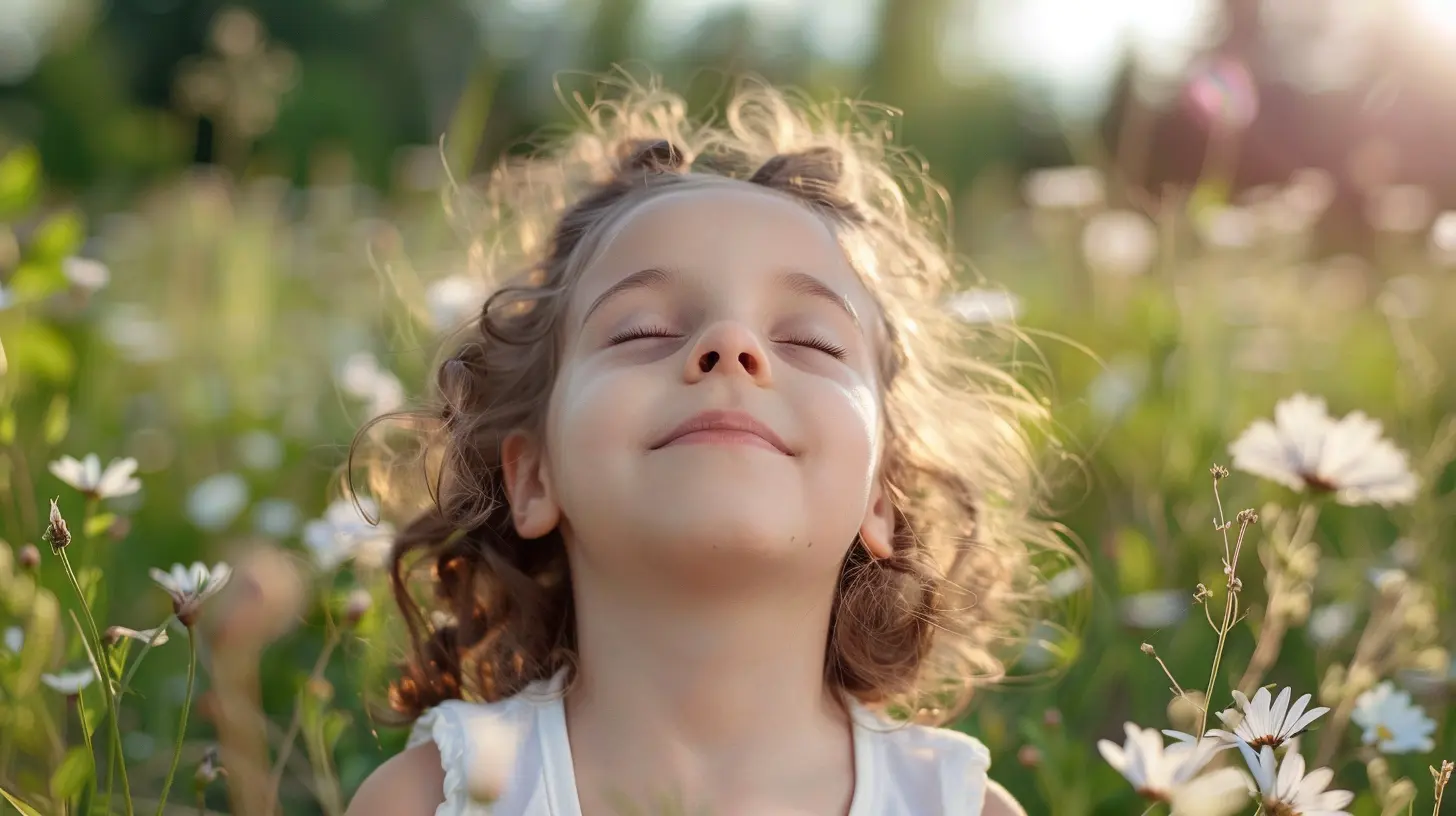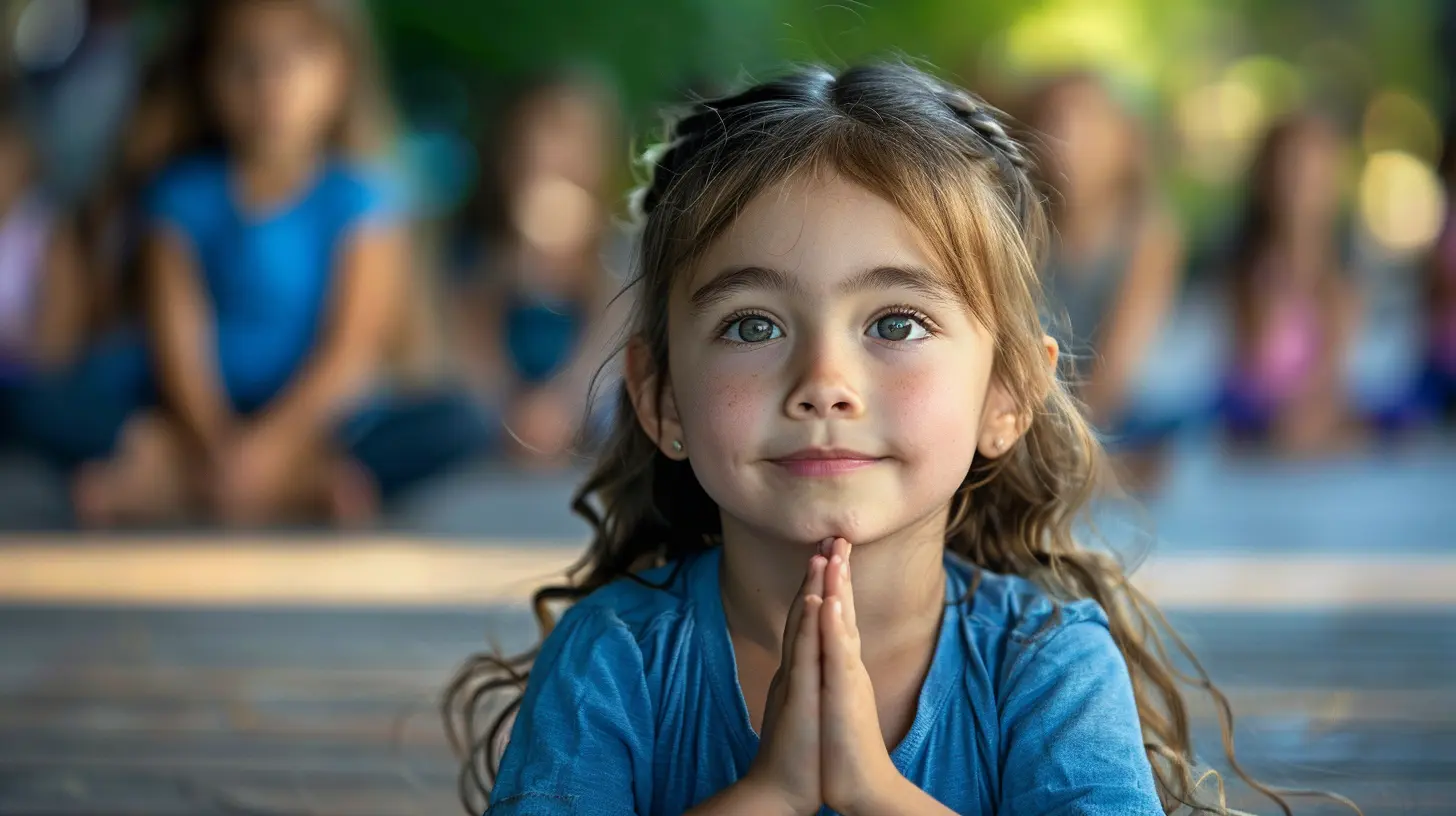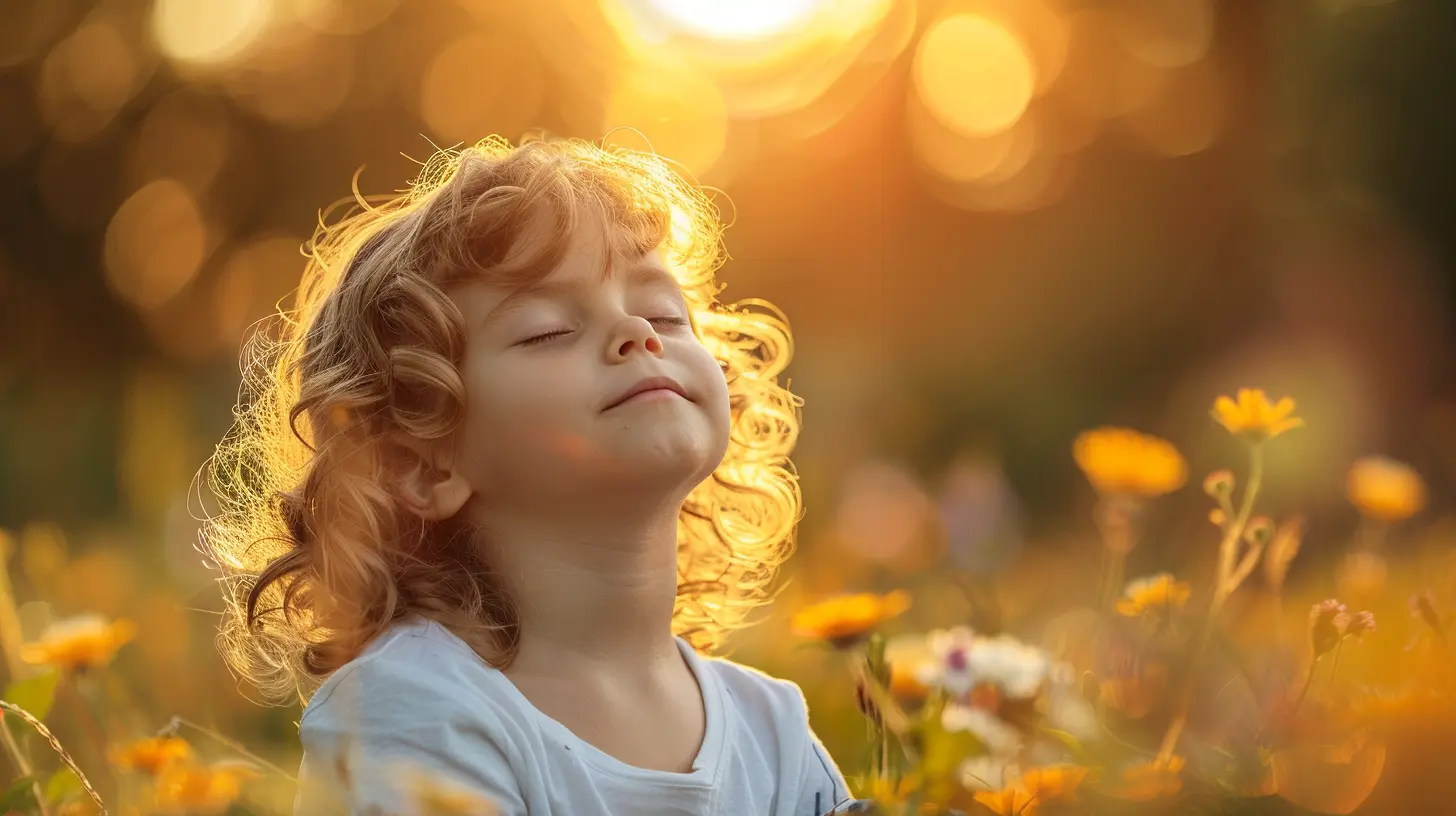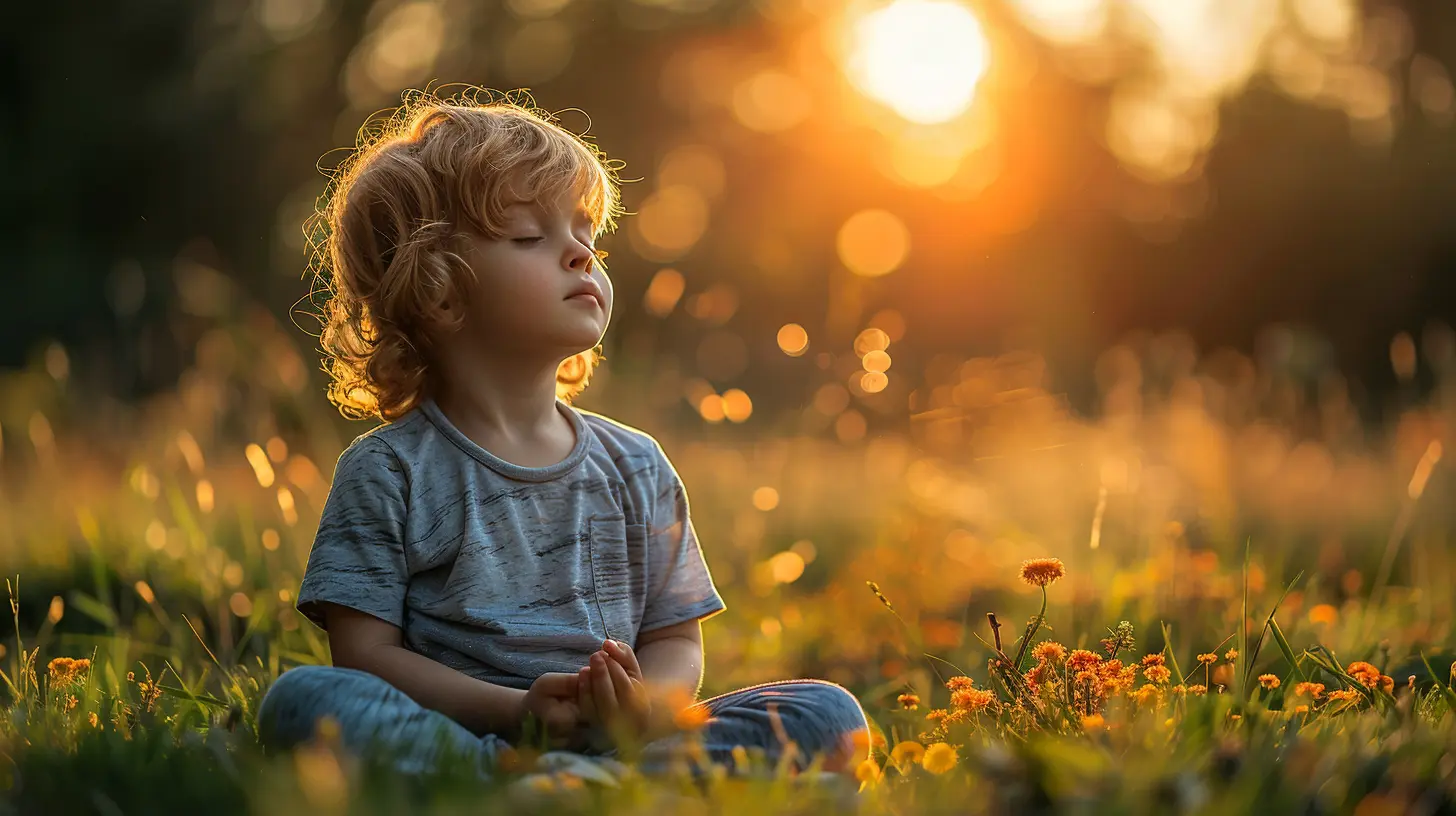The Benefits of Teaching Deep Breathing to Children
4 August 2025
Let’s be honest—kids are pretty awesome. They’re full of energy, curiosity, and endless questions (sometimes too many). But just like adults, they can feel overwhelmed, anxious, or stressed out. Yep, those tiny tornadoes of energy have big feelings too! And guess what? One of the simplest, most effective tools for helping children navigate those emotions is something as basic as…breathing.
No, really—deep breathing is a game-changer. It’s like a mini superpower we can hand over to kids, helping them tap into calmness, focus, and better health. So, let’s dive right in and chat about the incredible benefits of teaching deep breathing to children.
Why Deep Breathing Matters for Kids (and Adults Too)
Before we get into the magic it works for kids, let’s talk about what deep breathing actually is. It’s more than just taking a big gulp of air. Think of it like this: shallow breathing is like sipping through a straw, while deep breathing is more like drinking from a wide mouth jug—it lets your lungs expand fully and pulls oxygen down to the belly.For kids, whose bodies and emotions are still developing, learning the art of deep breathing can be a life skill that sticks with them well into adulthood.
1. Calms the Nervous System
Picture this: your child is freaking out because their favorite toy disappeared (and by “disappeared,” we mean it’s under the couch). Cue the meltdown. Now imagine giving them a tool that literally flips the switch from “panic mode” to “calm mode.”That’s what deep breathing does—it activates the parasympathetic nervous system, also known as the “rest and digest” system. It's like turning the dial down on stress. When kids breathe deeply, their bodies get the signal: “Hey, everything’s okay.”
Bonus? Their heart rate slows, their muscles relax, and their brain exits emergency mode. That’s a big win for such a small effort.
2. Boosts Emotional Regulation
Let’s be real—big emotions can be scary, especially when you’re six and can’t explain why you’re having a meltdown in aisle three of the grocery store.Deep breathing gives kids a way to pause, check-in, and manage what they’re feeling. When practiced regularly, it helps them become more aware of their emotions and create a gap between feeling and reacting.
It’s like giving them an emotional remote control with a pause button. And we all need a pause button sometimes, right?
3. Improves Focus and Attention
Ever tried getting a kid to sit still for five seconds? Yeah, not easy. But deep breathing can actually help increase focus by delivering more oxygen to the brain.Think of it like rebooting a glitchy computer—deep, steady breaths clear the mental clutter and help kids tune in to the task at hand. Whether it's homework, listening in class, or completing a simple puzzle, better breathing means better brainpower.
4. Enhances Sleep Quality
Bedtime struggles? You're not alone. Every parent knows the pain of trying to get a child to sleep when their brain is still in hyper-drive. Deep breathing is a gentle way to wind down the body and mind before sleep.By practicing slow breathing as part of a bedtime routine, children can more easily transition from “go-go-go” mode to a calm, restful state. Think of it as a bedtime lullaby for the lungs.
5. Encourages Mindfulness
Mindfulness isn't just for yoga-loving adults—it’s actually incredibly beneficial for kids, too. Being mindful simply means being present in the moment without judgment. Deep breathing naturally pulls kids into the now.It teaches them to take notice: “What does my body feel like right now? What thoughts are in my head?” This awareness creates empathy, patience, and self-control.
So next time your child is bouncing off the walls, try pointing them toward five deep breaths. It might just be the reset button everyone needs.
6. Builds Resilience Under Stress
Life throws curveballs, even at kids. Tests, social pressures, new environments—these challenges can be overwhelming.Deep breathing is like a stress shield. It teaches children that while they can’t always control what happens, they can control how they respond. This builds emotional resilience that helps them face stress with confidence.
You’re basically giving them armor made of air. How cool is that?
7. Strengthens Physical Health
Okay, so we’ve talked about the mental and emotional perks, but what about the body?Deep breathing boosts immune function, improves heart health, and even aids digestion. More oxygen flowing through the body means better overall health.
It’s like a mini-fitness routine for the lungs and heart—without breaking a sweat.
8. Encourages Better Behavior
When kids are calm and in control of their emotions, guess what? They behave better. Shocking, right?But it makes sense. A child who knows how to pause and breathe before reacting is less likely to lash out, throw a tantrum, or have a meltdown. Deep breathing fosters patience and self-awareness in a very natural, non-discipline-y way.
Suddenly, you’re not just avoiding chaos—you’re parenting a tiny zen master.
9. Fosters Connection and Communication
Practicing deep breathing together strengthens the bond between you and your child. It creates quality time, shared routines, and a safe space for emotions.Whether it becomes part of your morning ritual or a daily wind-down, breathing together tells your child, “I'm here, we’re in this together.”
Plus, it opens the door to talking about feelings in a non-threatening way. That’s pure gold for child-parent communication.
10. Prepares Kids for the Real World
Here's the biggie: Deep breathing builds lifelong coping skills. The world isn’t always butterflies and rainbows, and teaching self-care tools now prepares kids for future challenges.From exam stress to job interviews to relationship hurdles—breathing will always be there when they need it. It’s the kind of thing they'll thank you for when they're older (you know, after that teenage eye-roll phase).
How to Teach Deep Breathing to Kids (Without Making It Boring)
So, how do you actually get kids to do this? Great question. Let’s break it down:🟡 Make It Fun
Kids learn best through play, so turn deep breathing into a game.- Balloon Breaths: Pretend their belly is a balloon. Inhale to fill it up, exhale to let it shrink.
- Smell the Flower, Blow out the Candle: Inhale like sniffing a flower, exhale like extinguishing a candle.
- Teddy Bear Breathing: Place a stuffed animal on their belly and watch it rise and fall with each breath.
🟢 Keep It Short (At First)
Start with just 2–3 minutes a day. Add more time as they get used to the practice. Think of it like training wheels—you don’t ride a bike cross-country on day one.🟣 Use Visuals and Music
There are loads of kid-friendly breathing videos and apps out there. Soft music, colorful animations, or even breathing buddies can make it feel like a fun adventure.🔵 Be the Role Model
Kids do what they see. Practice deep breathing yourself—in traffic, during chores, or when you're feeling stressed. Let them see that even grown-ups need to pause and breathe.When and Where to Practice
Deep breathing isn’t just for yoga mats or bedtime routines. Try it:- Before a test or big presentation
- During overwhelming moments (tantrums, fights, etc.)
- After physical activity to help calm down
- As a morning ritual to set the tone for the day
- Anytime, really—because breathing never goes out of style
Final Thoughts: Small Breaths, Big Benefits
Teaching deep breathing to children is one of those simple but mighty parenting hacks. It's inexpensive, easy to teach, and doesn't take up space (except in your lungs).More importantly, it arms kids with a skill that helps them handle life—regardless of where they are or what they’re up against. You’re not just teaching them how to breathe; you’re teaching them how to be.
And let’s be honest, in a world that moves a mile a minute, slowing down to breathe might just be the most powerful lesson of all.
So the next time your kid's spiraling, take a deep breath—and invite them to do the same.
all images in this post were generated using AI tools
Category:
Childrens HealthAuthor:

Tiffany Foster
Discussion
rate this article
1 comments
Gianna McRae
Thank you for highlighting such an important topic. Teaching children deep breathing not only fosters emotional regulation but also equips them with lifelong coping skills. A valuable practice for their well-being!
August 24, 2025 at 3:08 PM

Tiffany Foster
Thank you for your thoughtful comment! I completely agree—deep breathing is a powerful tool for children's emotional well-being and resilience.


